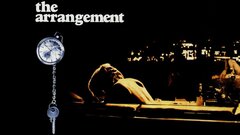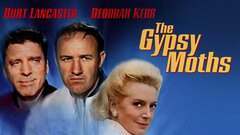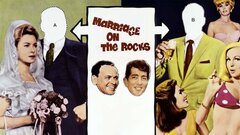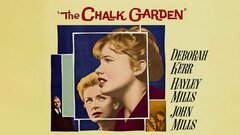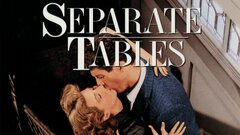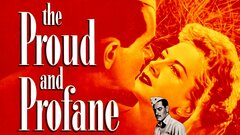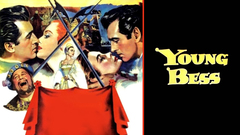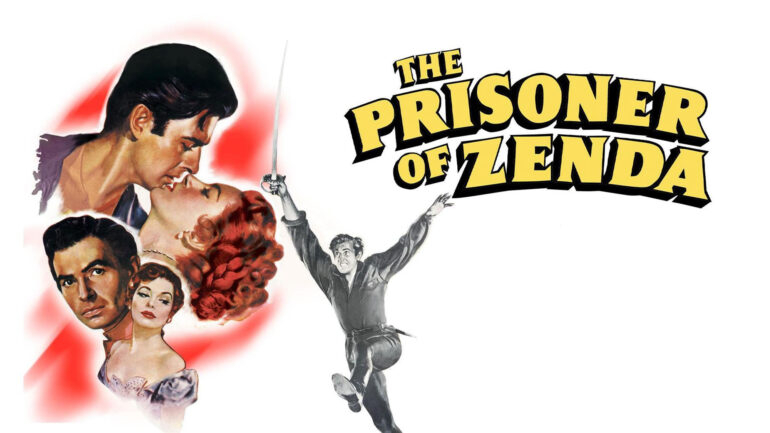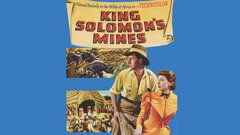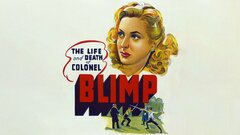Known as "The English Rose," lovely, red-haired Deborah Kerr - "It Rhymes with Star!" as MGM memorably proclaimed in her introduction to American audiences - was the distinguished Scotland native who perfectly embodied the attributes of genteel grace and beauty for generations of moviegoers. Following a brief career in ballet and some repertory work in various productions of Shakespeare, she first gained attention in "Major Barbara" (1941) and demonstrated the screen presence of a natural star in Michael Powell's Technicolor masterpieces "The Life and Death of Colonel Blimp" (1943) and "Black Narcissus" (1947).
Lured to Hollywood, Kerr graced event movies like "King Solomon's Mines" (1950) and "Quo Vadis" (1951), but it was her dramatic work in "Julius Caesar" (1953) and unexpected display of anger and sensuality in "From Here to Eternity" (1953) that confirmed her full range as a performer. While she sometimes bristled at being cast so often as the prim and proper lady, audiences loved her as those characters, never more so than in the musical "The King and I" (1956), one of her most enduringly popular vehicles, along with the romance perennial "An Affair to Remember" (1957). Admired in the industry for her talent and professionalism, and able to excel at playing everything from nuns to slaves, Kerr emerged as one of the finest and classiest leading ladies of her day.
Born Deborah Jane Kerr-Trimmer in Helensburgh, Scotland on Sept. 30, 1921, Kerr started ballet lessons at the age of five and began her schooling at Northumberland House Boarding School in Bristol. A quiet and sensitive girl, she was frequently bullied, but found escape at age 16 when invited to attend the Hicks-Smale Drama School, where she continued her ballet studies and honed her diction and deportment. Kerr had her first taste of acting when she read some children's stories on the BBC and earned small parts in performances of Shakespeare. She decided to concentrate on acting instead of ballet - citing her 5'7" inch frame as being inappropriately tall - and participated in productions at Regent Park's Open Air Theatre.
Thanks to this added exposure, Kerr was spotted by a talent scout and offered a five-year film contract. Her first role, a brief appearance in the spy drama "Contraband" (1940), was never seen by the public, as the footage ended up on the cutting room floor. However, she was soon given a supporting part as a Salvation Army worker in the widely-seen adaptation of George Bernard Shaw's "Major Barbara" (1941), which immediately led to her first lead role in the Depression-era drama "Love on the Dole" (1941). Although Kerr's beauty opened doors, her fine dramatic performance in a production of "Heartbreak House" (1943) convinced sceptics that she did indeed have genuine talent, and she toured with the play for six months throughout England and Scotland.
Kerr's striking red locks were ideal for the Three-Strip Technicolor world of Michael Powell's "The Life and Death of Colonel Blimp" (1943), where she played three very different women who figure into the life of the title character. It was a wonderful showcase for Kerr's talents and the actress was promptly offered a contract with MGM. Kerr agreed to the deal, but was temporarily allowed to remain on her home soil. She gave another winning performance in the comic espionage thriller "I See a Dark Stranger" (1946) as an Irish girl so disillusioned by Britain that she seeks to join the IRA, but ends up spying for the Nazis.
After MGM was compensated to the tune of £16,000 by Powell, she reteamed with the director for his classic "Black Narcissus" (1947). As a resolute nun seeking to establish a school and hospital in a remote area of the Himalayas, Kerr's superb performance helped to make the film a major success in both England and America. By that time, director Powell had fallen deeply in love with Kerr, but was unsuccessful in convincing her to stay in England. She launched her Hollywood career opposite no less than Clark Gable in "The Hucksters" (1947) and earned her first Oscar nomination with a powerful performance as a disillusioned alcoholic in "Edward, My Son" (1949). Now one of the studio's prime assets, Kerr was given the female leads in MGM's adventure spectacles "King Solomon's Mines" (1950) and "Quo Vadis" (1951), both box office smashes and among the most fondly remembered pictures of their type from that era.
While she more than fulfilled the basic requirements of the roles MGM assigned her, it was her turn as Portia opposite Marlon Brando and an assortment of distinguished British stars in "Julius Caesar" (1953) that provided Kerr with the sort of acting challenge her Hollywood career had largely lacked up to that point. Another key title from that period, "From Here to Eternity" (1953), provided Kerr with the chance to shatter her image as a proper, demure Englishwoman. Sporting blonde locks and a convincing American accent, her daring performance as an adulterous wife resulted in another Oscar nomination, and her famous encounter with co-star Burt Lancaster in the Hawaiian surf ranked among the most erotically charged moments of 1950s cinema, as well as one of the most iconic film scenes in history.
That year, Kerr also made her Broadway debut in the very well received drama "Tea and Sympathy" (1953) and recreated that role for the 1956 motion picture version, though its story of a young man's struggle with his sexual identity was blunted in the latter by the production code censorship of the period.
Although "From Here to Eternity" helped to broaden her appeal, Kerr did return to playing proper ladies on occasion, and was never better than as the governess who falls for Yul Brynner's dynamic monarch in the musical smash "The King and I" (1956), arguably Kerr's best remembered part. She donned a nun's habit once again for "Heaven Knows, Mr. Allison" (1957), the first of four films with Robert Mitchum, had wonderful chemistry with Cary Grant in the romantic comedy-drama "An Affair to Remember" (1957), and shed glamour for her role as a sheep shearer's wife in "The Sundowners" (1960), one of her most affecting performances.
Although Kerr's marriage to World War II hero Anthony Bartley was depicted by the Hollywood press as ideal, it had quietly disintegrated over the years, thanks to Kerr's many months on various locations and his embarrassment over her financial success. On the day Kerr's divorce was finalized in 1960, she wed writer Peter Viertel, best known for his screenplays for "The Sun Also Rises" (1957) and "The Old Man and the Sea" (1958).
Following her wedding, Kerr slowed down a bit in order to spend time with her new husband, but had several memorable roles in the early 1960s, perhaps most famously as a governess caring for two seemingly possessed children in the eerie and visually striking chiller "The Innocents" (1961). "The Chalk Garden" (1964) found her playing another governess dealing with another problem child, though one affected by more mundane problems in that case. Kerr also impressed in "The Night of the Iguana" (1964) as a spinster who proves to be an unlikely saviour for troubled alcoholic Richard Burton, and the actress had another encounter with evil in the offbeat thriller "Eye of the Devil" (1966).
With the arrival of the new motion picture ratings system in the United States, filmmakers were able to include more explicit imagery of a sexual or violent nature, as well as examinations of mature themes previously forbidden to them. Thus, it was not a complete surprise that "The Gypsy Moths" (1969) included some nudity, but eyebrows were raised when the sequence in question featured Kerr. Age 47 at the time of shooting, her love scene with Burt Lancaster in the movie was tastefully shot and germane to her character - that of a housewife in an unhappy, sexless marriage. She also did a second, unused nude scene for Elia Kazan's "The Arrangement" (1969), but Kerr announced her retirement from movies after that production and cited the increasing proliferation of sex and violence and a lack of age appropriate roles as the reasons.
Concentrating on stage work, she appeared in London productions of "The Day After the Fair" (1972-74) and "Overheard" (1981); had runs in the Los Angeles productions of "Souvenir" (1975) and "Long Day's Journey into Night" (1977); and took a final bow on Broadway with "Seascape" (1975). Kerr also accepted roles on the small screen via the miniseries "A Woman of Substance" (syndicated, 1984), for which she received an Emmy nomination, and the TV movies "Reunion at Fairborough" (HBO, 1985) and "Hold the Dream" (Channel 4, 1985). She also made her final feature film appearance in "The Assam Garden" (1985), a little seen British drama. Although she was nominated on several occasions for Academy and BAFTA Awards, Kerr did not receive any until she was presented with honorary prizes by both organizations after her retirement. Afflicted by Parkinson's disease and confined to a wheelchair near the end of her life, Kerr passed away on Oct. 18, 2007; Viertel, her husband of more than 40 years, died of cancer a mere 20 days later.
By John Charles








